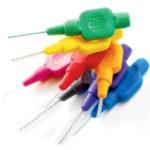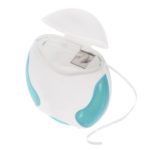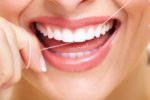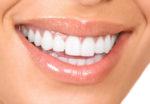Why use an interdental brush?
The most common cause of oral diseases, such as gingivitis and caries, forms between your teeth. From the twelfth year of life, it is necessary to daily maintain complete oral hygiene, especially in interproximal spaces between the teeth. To help you decide which one to choose read our best interdental brushes review.
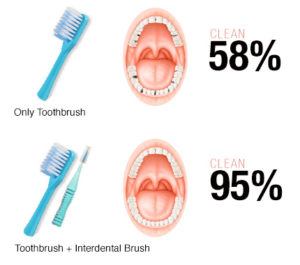 A paradise for dental plaque or infernal potential for damaging your oral health? Interdental spaces are both. In insufficiently clean mouth, they offer comfortable shelter to numerous bacteria from plaque. And that can cause serious health problems. A superficial oral hygiene particularly supports the development of gingivitis and caries.
A paradise for dental plaque or infernal potential for damaging your oral health? Interdental spaces are both. In insufficiently clean mouth, they offer comfortable shelter to numerous bacteria from plaque. And that can cause serious health problems. A superficial oral hygiene particularly supports the development of gingivitis and caries.
Also, the tartar on your teeth is nothing but soft plaque, which thanks to the minerals from the saliva becomes solid. And, due to superficial cleaning, it remains on your teeth. We also know that tartar is one of the factors that promote the development of inflammation of gums and periodontal disease. These oral diseases are associated with an increased risk of heart attack, stroke, diabetes, premature birth and a weakened immune system. So, we can see clearly how important it is regularly and thoroughly remove plaque.

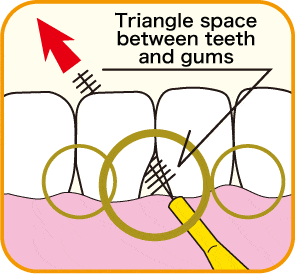 A top manual toothbrush is the main tool for mechanical cleaning of your teeth. But by no means it it not the only remedy for removing dental plaque and food residues. In fact, a manual toothbrush can not reach certain tooth areas. As we already know, our teeth have five surfaces. And side surfaces that are in contact with adjacent teeth are often ignored in the procedure of maintaining oral hygiene. The first changes occur just in these regions between two teeth. So, gum problems are usually most expressed in the interdental areas.
A top manual toothbrush is the main tool for mechanical cleaning of your teeth. But by no means it it not the only remedy for removing dental plaque and food residues. In fact, a manual toothbrush can not reach certain tooth areas. As we already know, our teeth have five surfaces. And side surfaces that are in contact with adjacent teeth are often ignored in the procedure of maintaining oral hygiene. The first changes occur just in these regions between two teeth. So, gum problems are usually most expressed in the interdental areas.
The main products used in maintaining interdental hygiene are dental floss and/or interdental brush. Only regular daily hygiene, with the help of toothbrush, toothpaste and interdental brushes, eliminate all those harmful pathogens – bacteria from plaque. In under-cleaned mouth these bacteria lead to inflammation of the gums (gingivitis), periodontal disease and cavities.
When and how should we use an interdental brush?
The use of interdental brush is mandatory in people who have bridges, have gone through dental implant procedure, have crowns, and who had oral surgery interventions on gums. Interdental brush is also a great help for all those who wear fixed braces. They are used in a manner that are carefully inserted in each interdental space. With moving back and forth they thoroughly clean the area between two teeth. The brush should be slowly pushed into the teeth gap, always under the angle of 90 degrees. When doing so, you should not feel any pain, but only gently pressure and brushing. If the toothbrush can’t go through an entire gap, then you need the smaller brush size or consider using dental floss in the region. Certainly it is important to remember that you should never squeeze the brush between your teeth. This way you can needlessly hurt your gums.

Cleaning of your interdental spaces for the first time will definitely lead to bleeding gums. Let this not intimidate you. After a few days the bleeding will stop, and your gums will not be inflamed any more.
After cleaning, rinse all brushes that you used under running water and allow them to air dry. You should change them when their fibers are so deformed that they can not effectively clean any more. Already after 10 to 14 days of regular use of interdental brushes, you will achieve success – interproximal spaces will be clean and healthy and your gums will not be swollen due to inflammation.
How should good interdental brush look like?
As we already know, most often the first signs of gum disease occur in regions between teeth. Therefore, it is necessary that, along with good soft toothbrush, use other tools to clean interdental areas, such as interdental brushes. 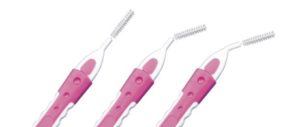
The ideal interdental brushes should have dense, soft and flexible fibers. The fibers should be as thin as possible to reach all the hard to reach areas of teeth. For effective cleaning, it is required that the brush has a wire core of an appropriate size for each gap. You should choose the brush with largest diameter that can be inserted by gently pressing into the space. Such brush will completely fulfill the space with its fibers and clean it entirely.
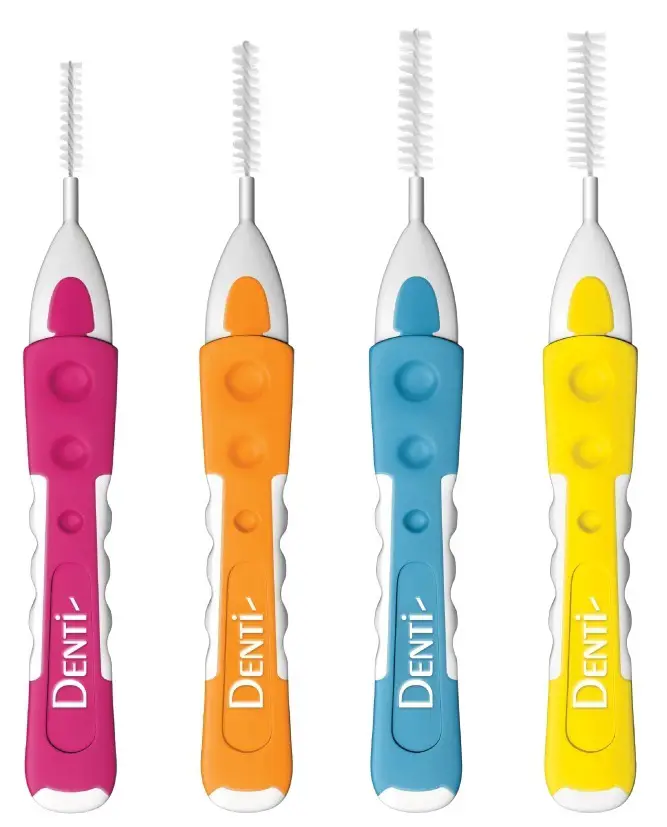 As said before, for thorough cleaning the size of the brush is extremely important. It should not be neither too small nor too big. Size of teeth gaps normally vary between front and back teeth. Therefore it is necessary to adjust the thickness of the wire core to the size of the gap itself. In define the optimal size of interdental brush, a dentist or dental hygienist can help by using a professional IAP probe. But, if you choose to determine the size by yourself, try different sizes of brushes, starting from the smallest to the biggest.
As said before, for thorough cleaning the size of the brush is extremely important. It should not be neither too small nor too big. Size of teeth gaps normally vary between front and back teeth. Therefore it is necessary to adjust the thickness of the wire core to the size of the gap itself. In define the optimal size of interdental brush, a dentist or dental hygienist can help by using a professional IAP probe. But, if you choose to determine the size by yourself, try different sizes of brushes, starting from the smallest to the biggest.
Interdental brushes are the only cleaner that can reach very bare root surfaces in molars which often have depressions and grooves. They are also used to clean wide gaps after surgical periodontal treatment. These brushes are specifically intended for use by persons with surgically treated gum problems. Also, they should be used for maintenance of braces and implants.
If you have’t cleaned your teeth gaps before, there is a possibility that you have inflamed gums in that areas. So they may bleed when cleaned for the first time. After couple of days of regular use this bleeding will stop. And that is because you have removed the cause of bleeding gums – bacteria and plaque from teeth gaps. If the bleeding doesn’t stop after a few days, talk to your dentist or dental hygienist.
